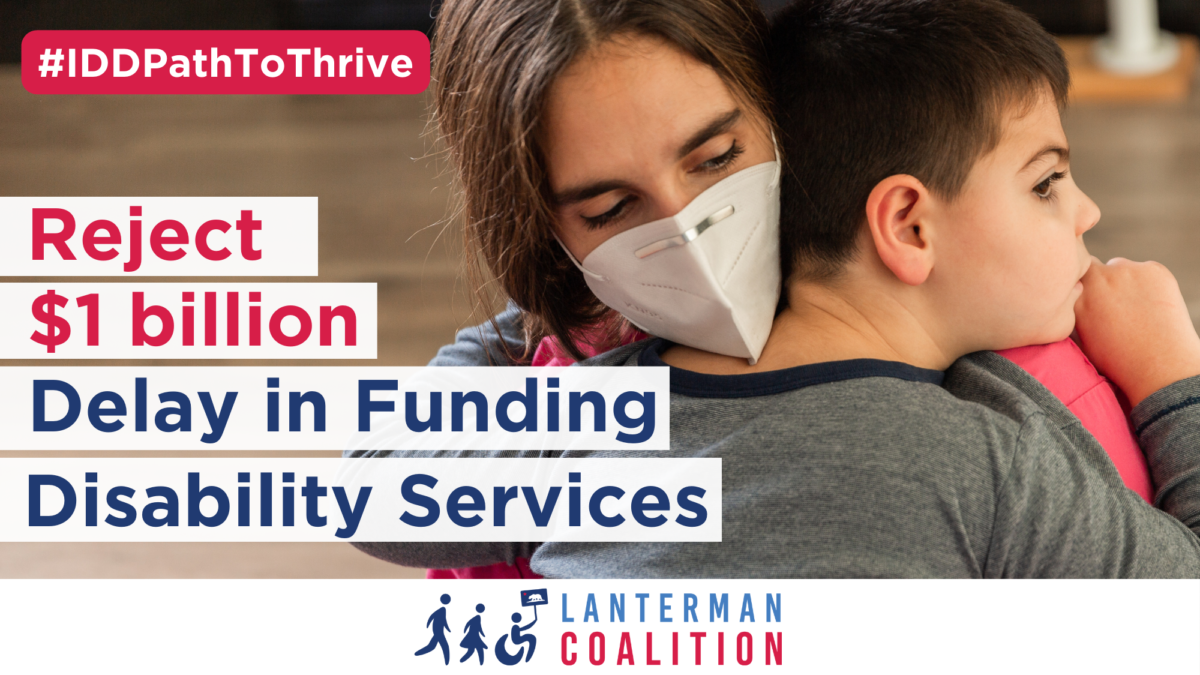By Jim Frazier, Public Policy Director, The Arc/UCP California Collaboration Former California State Assemblymember, and Former Chair of the Assembly Select Committee for Intellectual and Developmental Disabilities
I have been an advocate for the developmental disability community for close to two decades. It’s been a never-ending struggle to attain adequate funding from the State of California to provide the 458,000 Californians with lifelong disabilities with the safety net of state-funded services and supports they need to thrive.
We now have a situation that has been brewing for decades and has come to the point of collapse of the entire disability services system due to years of underfunding, neglect, and cuts to this population’s budget. The disability system endured $1.4 billion in budget cuts during the Great Recession in 2008 and 2009 that were never restored, and NEVER adjusted for inflation.
There was an attempt in 2014 to close the gap in funding, unfortunately it did not make up for all the past cuts or account for inflation increases. In 2015 a Rate Study by the Department of Developmental Services was commissioned by the Legislature to try and capture a real time picture of where rates were at the time and where they should be. It took four years to finally bring those numbers to the Legislature, which by then were already outdated. When the rates were presented, they never factored in inflation impacts and were (again) already several years old. When the rate study was eventually championed by the Legislature in 2021 there was a promise made to fully fund the $2.2 billion gap and finally provide hope and relief to the community. This promise, however, is already being attacked, and the hope is now fleeting. Only half of the funds have been invested, and they are based on 2019 costs, not current costs of minimum wage and increases due to inflation. There are now unprecedented long waiting lists for services, lack of affordable housing, and many programs have been forced to close, or services reduced leaving the children, youth and adults with disabilities and their families to go without vital supports.
Many of the organizations throughout the state who provide programs and services for people with disabilities have become nonprofits out of the necessity to survive and fill the gap in funding with the generous support of the community, and it’s still not enough. The definition of a not-for-profit doesn’t mean that you are expected to lose money. The intention is to provide a valuable service to the community and reinvest additional proceeds back into the business for growth. Given the inadequate state funding, these nonprofits are scrambling to keep their doors open, which takes away from the mission and the services the nonprofit is providing.
One of the ongoing issues I feel impacts the developmental disabilities system of support and services is the lack of institutional knowledge by the Administration and Legislature. Turnover is constant and term limits result in a revolving door of trying to educate and convince the new elected officials how important their support is for the disability community. Building relationships with these policy makers is imperative by inviting them to tour programs and introduce them to their constituents who rely on the state to provide them with critically-needed services. Their lifespan of programs and services are not “nice to haves” but rather “must haves” to survive day-to-day.
Recently, Governor Gavin Newsom signed into law a minimum wage increase of $25 for healthcare workers and $20 for the fast-food Industry employees. Meanwhile, The State of California overlooked the direct support professional (DSP) who works with people with disabilities and determined the minimum hourly wage of the disability workforce remains at $16 an hour. As a comparison Certified Nursing Assistants make a minimum of $21.49 an hour doing relatively the exact scope of work. For example, an individual with severe Cerebral Palsy who cannot use their arms or legs requires 24-hour care from DSPs in some of the following ways:
-
- Assisting with ordinary activities like dressing, eating (sometimes through a feeding tube), going to school or work, etc., and lifting the individual in and out of the wheelchair.
- Helping with personal hygiene (bathing, brushing teeth, bathroom assistance)
- In some cases, learning to administer medications and responding to health emergencies like seizures or asthma attacks
- Facilitating socialization (taking the individual to the park, helping them participate in different activities, offering entertainment options).
- Provide exercises using specialized, adaptive equipment.
A statewide survey conducted in 2018 indicated that 53% of the DSP workforce, who are primarily women, receive state benefits like food stamps and/or work two jobs to support their families due to inadequate living wages.
Last year, the Governor promised to close the funding gap with a $1 billion investment to be made THIS YEAR on July 1, 2024. However, the Governor changed his mind in his January budget proposal and suggested delaying the $1 billion that was promised in the rate study by one year. He calls it a “delay”, but it is essentially a massive funding cut. This would be catastrophic for an already unstable system of services for some of California’s most vulnerable individuals who are already going without support because of the DSP staffing crisis.
This rollercoaster of funding shortfalls has been going on for decades. It seems when times get tough, part of the budget is balanced on the backs of this already underfunded and undervalued population. This needs to STOP. State funding needs to reflect the actual cost of providing effective and quality services for individuals with disabilities. Enough is enough. It’s time to CARE, and to put everyone in the disability community on a
Please CLICK HERE to take action! It only takes two minutes to urge your elected officials to reject the Governor’s proposed delay in critical funding.

